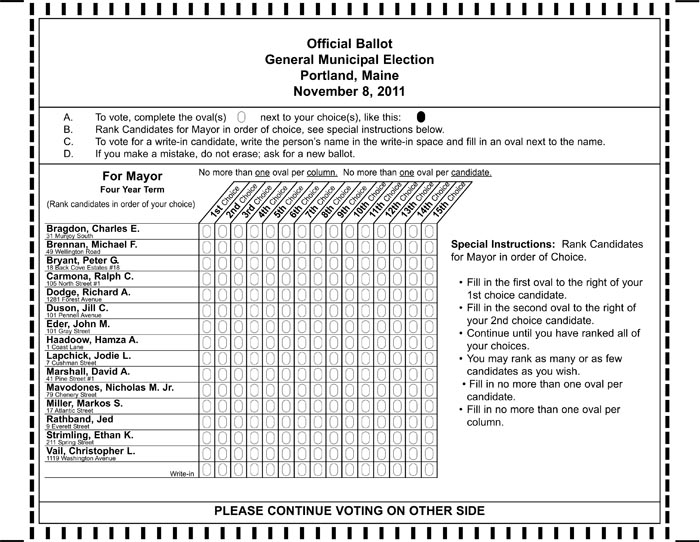The ballot may look like the answer sheet to the college boards, but you don’t have to be a genius to fill it out perfectly.
All you have to do is vote.
As Portland prepares for its first mayoral election in nearly a century, voters are trying to cope with a gargantuan field of 15 candidates and the introduction of ranked-choice voting, which lets voters express opinions on every candidate if they want to.
This is creating anxiety in the public about a strange new voting system that requires exotic strategies and yields mysterious results. But people should just calm down.
In a ranked-choice election, the candidate with the most votes wins. And voters are asked to do nothing more than they do every day of their lives.
Here’s how it works: Voters pay attention to the campaign, decide who would be the best person for the job, go to the polls and color in the oval next to that candidate’s name in the “first choice” column. They can stop there, feed their ballots into the machines and go home, knowing that their votes will be counted.
Voters who like two candidates would color in two ovals, one each in the first- and second-choice columns. Voters who like three would color in three ovals, the only rule being that they are ranked first, second and third choice. There can be no ties.
This is not a complex process. Voters rank choices all the time. When we vote in a general election after voting for a losing candidate in the primary, we are voting for our second choice (or our third, or our fourth.) When the drug store is out of our favorite brand of toothpaste, we pick our next favorite.
The complicated part comes for the clerks when it’s time to count. If no candidate has 50 percent of the votes plus one, the candidate with the least number of votes is eliminated, and his voters’ second-choice votes are allocated to the surviving candidates. If there is still no winner, the process continues. If a second-choice vote is marked for an already eliminated candidate, the clerks will allocate that ballot to that voter’s third choice. This keeps going until there is a winner and it is expected to take a lot of time.
But none of that complexity should confuse the voter. No strategy is needed — none even makes sense — other than voting for at least one candidate that you think is the best person for the job, or ranking several. There is no obligation to rank all 15, and doing so is not even wise.
It may look complicated, but it’s not, and voters shouldn’t over-think their approach this election. All they have to do is make up their minds and vote.
Send questions/comments to the editors.



Success. Please wait for the page to reload. If the page does not reload within 5 seconds, please refresh the page.
Enter your email and password to access comments.
Hi, to comment on stories you must . This profile is in addition to your subscription and website login.
Already have a commenting profile? .
Invalid username/password.
Please check your email to confirm and complete your registration.
Only subscribers are eligible to post comments. Please subscribe or login first for digital access. Here’s why.
Use the form below to reset your password. When you've submitted your account email, we will send an email with a reset code.